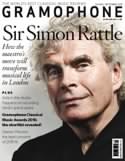Texte paru dans: / Appeared in: |
|
|
Outil de traduction (Très approximatif) |
|
|
Reviewer: Malcolm Riley
This generously filled two-disc set was recorded in 2013 on the mighty Klais organ (of 1962) in the rebuilt Cistercian abbey at Himmerod in the Rhineland. With its eight-second reverberation time, it presents a tremendous challenge for the player and engineer alike to produce comprehensible recordings.
The Latvian organist Iveta Apkalna (b1976) has chosen eight of Bach’s major organ works for the first disc. Her playing is totally assured and faithful to the printed score. The opening Toccata and Fugue in D minor is dispatched dramatically with meaty registrations, including generous use of the Pedal 32ft in the Toccata. The contrasting Pastorale in F is tinted with ‘spiky’ hues, eschewing the heavier registers. Things progress most satisfactorily with a majestic E flat major Prelude, its so-called St Anne Fugue striding slowly down the nave.
Apkalna’s account of the C minor Passacaglia is first-rate, with nothing overblown, and she dances through the G major Prelude, though possibly too quickly for this most generous of acoustics. She also misses several possible internal phrasings which a study of Dupré’s edition might have usefully clarified.
Happily she has the D major Prelude and Fugue well under control, with some superb staccato pedalling. Finally, she rips into the opening of the G major Fantasia, throwing the music high into the acoustic before ploughing through the five-part texture of the organo pleno. Despite one or two moments of unsteadiness in the pulse, this makes a most satisfying conclusion.
Concerns over the blurring effect
of such a large space are dispelled with the five pieces by Philip Glass. Here,
Stravinsky’s description of the organ as ‘the monster that never breathes’ could
not be more apt. Apkalna’s technical control is staggering. Her playing has
poise as well as purpose. These ‘endless toccatas’ simply shimmer, producing a
soothing, ethereal élan. She manages to shave off one minute from Glass’s own
recording of Mad Rush, and in Michael Riesman’s arrangement of the Conclusion
from Glass’s opera Satyagraha builds up most convincingly two powerful waves.
Most satisfying is the Dionysian whirlwind of the Dance No 2 of 1979, the
longest piece on the whole album.
|
|
|
|
|
|
Cliquez l'un ou l'autre
bouton pour découvrir bien d'autres critiques de CD |
|

/4260330918277.jpg)


